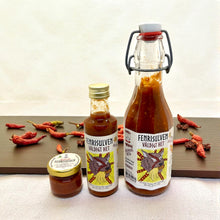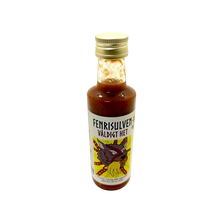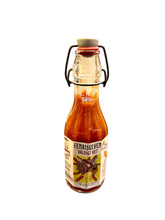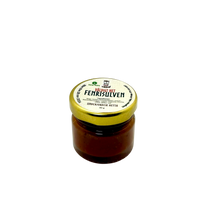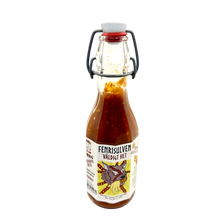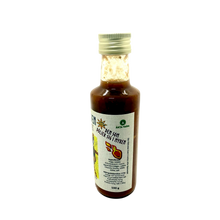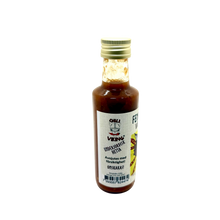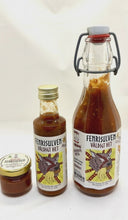
In a wolf-clad bottle whose contents are dressed in umber colored fur, tradition and modernity come together like a family during the Christmas celebration. The Fenriswolf – the one who hides in the mire. This copper-colored spring elixir is warming like a woolen undergarment and it spreads into the smallest pore and stirs life into your inner being. If you like hot things, this sauce is for you. It has an intense flavor that goes well with everything from chicken or seafood dishes to pasta sauces!
Fenrisulven - a very hot sauce of Ghostpepper (Naga Jolokia). We roast Ghost peppers, carrots and garlic to create a very hot sweet sauce that can be used to enhance the flavor of many dishes. Hot sauces can be used to flavor and spice up practically any food out there – we're talking breakfast, brunch, lunch, dinner, dessert, snack, come on! When do we NOT need a hot sauce? Don't answer it. Because I always need a good hot sauce on hand to add that sting and power we all crave.
In anticipation of Ragnarök, the gods feared the Fenriswolf, which grew bigger and stronger every day. They wanted to imprison him with the magic chain Gleipne, but the wolf refused. He didn't trust them, but if Tyr wanted to put his hand in his mouth, they would put the prison around his neck. When Fenrir didn't break free, he bit off Tyr's arm.
The Fenriswolf has arisen from Gjöll. When Ragnarök shakes the earth, the Fenriswolf comes loose and spews fire. 🔥
So, the chili sauce - what's its history? Researchers have looked at the history of the word itself to see where the fruit chili first began to be cultivated. Now we know that the chili pepper began to be cultivated already 6500 years ago in Mexico and that the word pepper entered the Swedish language around the year 1420.
Chili, however, is a relatively new phenomenon both in our language and in Swedish cuisine, and the word was introduced through chili sauce in 1946. The word "chili" itself comes from Oto-Azteki around 1500 years ago and Oto-Manguen already 6500 years ago, and has then which then entered the Swedish language through Spanish. In western Mexico, beans and corn have long been grown, and it was believed that chilies came from there.
The word chili also existed in languages spoken in Nicaragua and Honduras around 800 BC. And it is precisely through the roots of different languages that it can now be shown that chili first began to be cultivated further south in Mexico, around a triangle between Puebla, Oaxaca and Veracruz. Then it was Columbus who brought chili over to Europe and it became a very popular spice here.
But even then, the Aztecs and the Incas had already spread the chili all the way to southern North America. After Columbus, Portuguese and Spanish then carried the spice on to the colonies and trading places in Asia, Africa and India. And in this way it spread around the world and less than a hundred years later the chili was cultivated in southern and eastern Europe. At the end of the 16th century, it was cultivated in almost all of southern Europe. So a long journey. From seed and then around the world to finally give you an unforgettable taste experience! This product is also purchased as an appreciated gift.
120 g heat/bottle
Ingredients: Naga Jolokia (Ghostpepper), carrot, apple cider vinegar, water, Chipotle Morita, garlic, vinegar, salt
Nutrition declaration 100g : Nutrition declaration 100g : Energy 107 kJ/25 kcal; Fat 0.2 g (saturated fat 0 g); Carbohydrates 4.6 g (sugars 3.2 g); Protein 0.8 g; Salt 1.28 g







